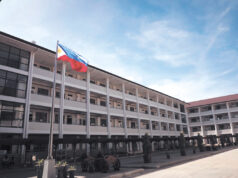The real estate potential of Vis-Min
The Philippine real estate market has exhibited a stellar growth in recent years and is poised to sustain the momentum in the coming years. The country’s bullish economy, strong investment inflows, young demographics and consumption-driven market are driving this upward trend, which is triggering a positive ripple effect across the property sectors in and outside the National Capital Region.
“Years of investment and strong economic development in the Philippines have fostered a robust real estate sector that now extends outside of the greater Metro Manila region and into secondary markets around the country,” Oxford Business Group said in a 2017 report.
The potential of property markets in Visayas and Mindanao, specifically Cebu, Bacolod, Iloilo and Davao, is great. Many property developers are looking to expand and build more projects in these provinces in response to the growing demand.
Real estate consulting services firm Colliers International Philippines said in a December 2017 report that developers’ infrastructure units should explore operation and maintenance opportunities in and outside of Manila.
“We also recommend that developers be more innovative given the proliferation of townships and expansion of opportunities in alternative markets such as Cebu,” the firm said.
Cebu is considered as the second most important metropolitan area in the country because of its booming IT (information technology) and BPO (business process outsourcing) industries. In addition, the province remains one of the most feasible industrial locations outside of Manila due to its strategic location and skilled manpower.
In a report covering the Cebu property market in the first quarter of 2018, Colliers said that offshore gambling is emerging as a critical segment of the Cebu office market, accounting for almost 25% of recorded transactions in 2017. The BPO-Voice companies continue to dominate the sector, covering more than a half of transactions. Meanwhile, the KPO (knowledge process outsourcing) firms also sustained demand, taking 20% of the total office leases.
In the residential sector, more condominium developments are being seen in Cebu than houses and lots. Colliers said that the condominium stock in Cebu totals 33,400 units. Though launches for both horizontal and vertical projects in 2017 were down, take-up for condominiums was notably faster at 5,600 units than the take-up for houses and lots, which was at 1,100 units.
Cebu’s retail stock is now at 1.06 million square meters (sq.m.), more than double the 2010 level. “Its retail market remains interesting and competitive since both local and national players are active. Despite the development of super-regional malls in established and emerging hubs and the entry of foreign retailers, the downtown area which houses some of the oldest retail outlets remains bustling,” Colliers said.
Another significant area in the country’s real estate industry is Bacolod City, where a number of BPO firms are continuously expanding, while some KPO companies are looking at the city as a potential site outside of Metro Manila.
The Bacolod residential sector is primarily driven by house and lot developments with over 25,000 house and lot units versus 1,200 condominium units. “This is not surprising given the absence of a sizeable business district like major cities in the country as offices are limited in the city center along Lacson Street. Until then, demand will still be concentrated in house and lots,” Colliers said.
Apart from being a major destination for call center services, Bacolod is one of the largest retail markets outside of Metro Manila. National developers currently cover about 30% of this market while local players account for the remaining 70%.
Another real estate hot spot in Visayas is Iloilo. As stated in a Colliers report, “The office sector growth in Iloilo has been limited by the available supply in the province. While interest from investors remains strong, the limited supply has prevented any major take-up from business process outsourcers looking to expand.”
In terms of Iloilo residential sector, the province is still largely composed of houses and lots. However, the provincial market has seen the rise of the condominium market recently. Colliers said that even if it is still in early stages of development, the vertical market has notable bright spots in the province.
Meanwhile, Iloilo’s retail sector is changing dynamically. Provincial brands are now competing healthily with bigger national and foreign brands. “It is not surprising that well-established local developers with malls such as Mary Mart, Gaisano, and Amigo are also faring well alongside national players such as SM, Robinsons, Ayala, and Megaworld,” Colliers said.
Joining other real estate hot spots from Visayas is located down south, the hometown of the incumbent Philippine President Rodrigo R. Duterte — Davao. According to a Mindanao-based property company Damosa Land, Inc., they continue to see strong demand for residential properties and commercial and office spaces in the province.
“The Davao region has been growing over 8% to 9% over the last five years or so. Growth in the services sector, BPOs, manufacturing,and now infrastructure (among others) are fueling this growth,” Damosa Land said in an e-mail to BusinessWorld.
Davao, which has traditionally been the investment center in Mindanao, has been growing rapidly over the last years. Damosa Land said that buyers and investors enjoy the good peace and order, cleanliness and business opportunities Davao has to offer.
“The trends of our buyers are similar to what we are seeing all over the country. Our sweet spot is around the 30 to 45 year age, young professionals, and starter families. In our case, foreign buyers still make up a small percentage of buyers. However, OFWs (overseas Filipino workers) make up about 25% of our buyers. As for millennials, we believe these will make up a large part of our buyers in the coming years,” Damosa Land said.
Despite all the impressive economic growth Davao has achieved, the property company believes that there are still many opportunities in the region.



